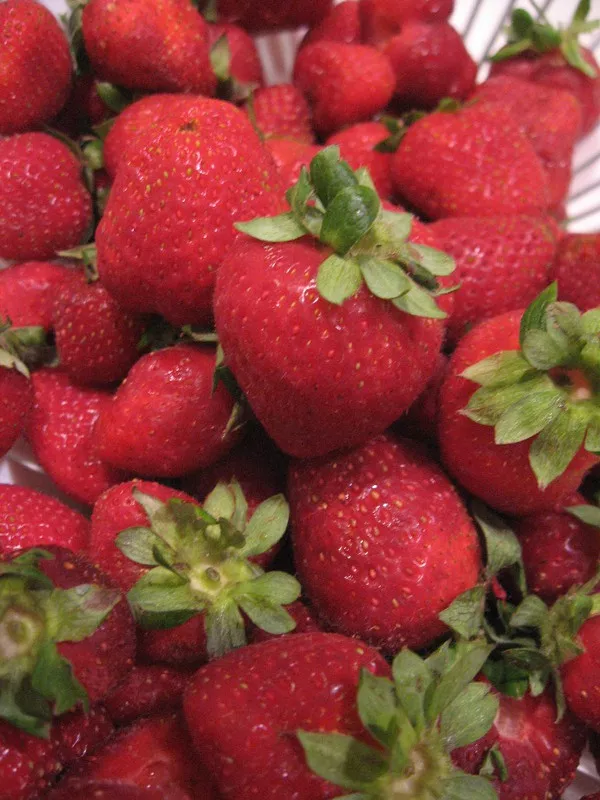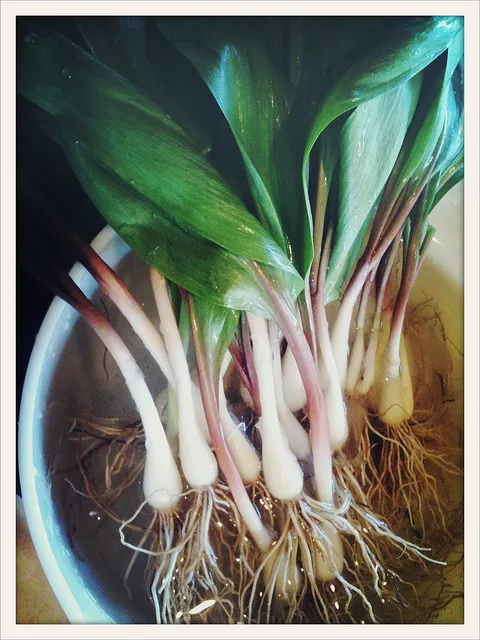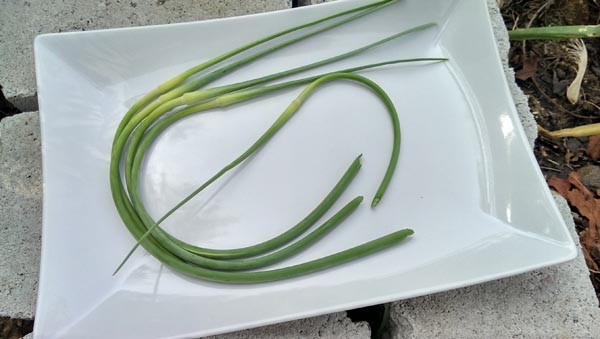Down and Dirty
Thursday, June 26, 2014
Down and Dirty Talking bacon for upcoming Bacon & Brews Cruise-In
Posted By Alison Leininger on Thu, Jun 26, 2014 at 3:28 PM
Bacon is king. Whether dipped in chocolate, layered with lettuce and tomato, or crumbled over truffle-infused deviled eggs, it seems Americans have forgiven bacon its unhealthy reputation. After all, we're talking about a mouth-watering combination of fat, salt and crunch.

Charlotte's food scene is no exception. The upcoming Bacon & Brews Cruise-In, a benefit for the Piedmont Culinary Guild happening Sunday at Atherton Mill and Market, is proof of that.
As North Carolina is one of the biggest pork producers in the nation, "we have plenty of belly to go around," says The Asbury's Chris Coleman, who's serving as the event's committee chairman.
Friday, June 20, 2014
Down and Dirty Going foraging with Heirloom's Clark Barlowe
Posted By Alison Leininger on Fri, Jun 20, 2014 at 11:34 AM
"Oh wow, we got super lucky!" Our little group is no more than 50 feet from the residential street when Clark Barlowe darts off the dirt path, reaching for an overhanging branch. "I never thought we'd see these today. Mulberries."
Close on his heels, students and chef instructor Terra Ciotta from the Art Institute of Charlotte cluster under the tree to see, taste and pluck the small red berries as Barlowe explains that the pink unripe ones can also be pickled. This is just the beginning of an afternoon stroll with the chef/owner of Heirloom restaurant, who also happens to be a lifelong forager.
Friday, June 13, 2014
Down and Dirty Where to find the savory side of summer fruits
Posted By Alison Leininger on Fri, Jun 13, 2014 at 1:10 PM
As the temperature warms in North Carolina, we enter the height of culinary pleasures: fruit season. Right now, spring strawberries are ceding way to blueberries, raspberries, blackberries and that Southern star, the peach. Chefs all over town are dreaming up the tastiest tarts, pies, cobblers ... and gastriques, compotes and salsas, too.

Let me introduce you to the savory side of summer. We are all familiar with the sweet treatment of fruits, but these delectable darlings can play more than one role in the kitchen. At Santé restaurant in downtown Matthews, chef Adam Reed has done his fair share of strawberry shortcake. But he's also been serving a strawberry gastrique with his duck breast entrée.
Friday, June 6, 2014
Down and Dirty Flowers for dinner
Posted By Alison Leininger on Fri, Jun 6, 2014 at 9:00 AM
One of the sights that has always drawn me to farmers markets is that of fresh cut flowers brimming over tall containers and spilling out of shoppers' bags. But did you know that not all the blooms for sale there are destined for dining-table décor? Edible squash blossoms are an old new favorite not only sold at the markets, but also served at the most elegant and modern restaurants in Charlotte.
In the Charlotte area, the primary supplier of fresh squash flowers is Tega Hills Farm in Tega Cay. About seven years ago, Mark and Mindy Robinson were already considering adding the flowers to their commercial crops when they were approached by chef Luca Annunziata of Passion8 Bistro in Fort Mill. "It was kind of a case of 'If you grow 'em, I'll buy 'em,'" Mindy Robinson recalls.
Thursday, May 29, 2014
Down and Dirty It's time to try garlic scapes
Posted By Alison Leininger on Thu, May 29, 2014 at 4:49 PM
Last weekend I was surprised to see a new favorite at the Charlotte Regional Farmers Market - green coiled stems with a small yellowish bump toward the narrow end. As an enthusiastic garlic grower myself, I recognized garlic scapes immediately and knew it was time to start thinking strategically.
Around here, garlic is planted in early fall, to winter over and be harvested in June or July. About a month before harvest, the plant's flat narrow leaves are suddenly joined by stiff round spikes more reminiscent of garlic's cousin the onion. These are scapes, the flower-bearing stems that, if left, will burst into a stinky bloom of clustered mini bulbs. However, farmers generally snip them off to ensure the main garlic bulb under the soil continues to develop.
It wasn't until recently that I did a little research and realized that the garlic scapes I'd been trimming off my own plants and discarding are actually a delicious, adaptable ingredient in early summer dishes. They can be treated like chives or scallions, and play well with butter, hummus and salad dressings. Or they can be eaten on their own, sautéed lightly or even grilled and served as a side dish. So when they showed up at the market, I knew it was time to keep an eye on my own garden and do some menu planning.
Thursday, May 22, 2014
Down and Dirty Where to find ramps while they're still available
Posted By Alison Leininger on Thu, May 22, 2014 at 10:15 AM
What the hell are ramps, you ask? Sometimes called wild leeks, ramps are related to the onion and grow along the Appalachians, from South Carolina into Canada. In South Appalachian, ramps festivals may be a tradition you never have heard of, but the garlicky spring greens are growing in popularity all the way up to New York City, where chefs snap them up as soon as they arrive at the markets. If you see ramps on the menu, you should definitely give them a try, because they won't be around long.

- PictureNewYork LG






